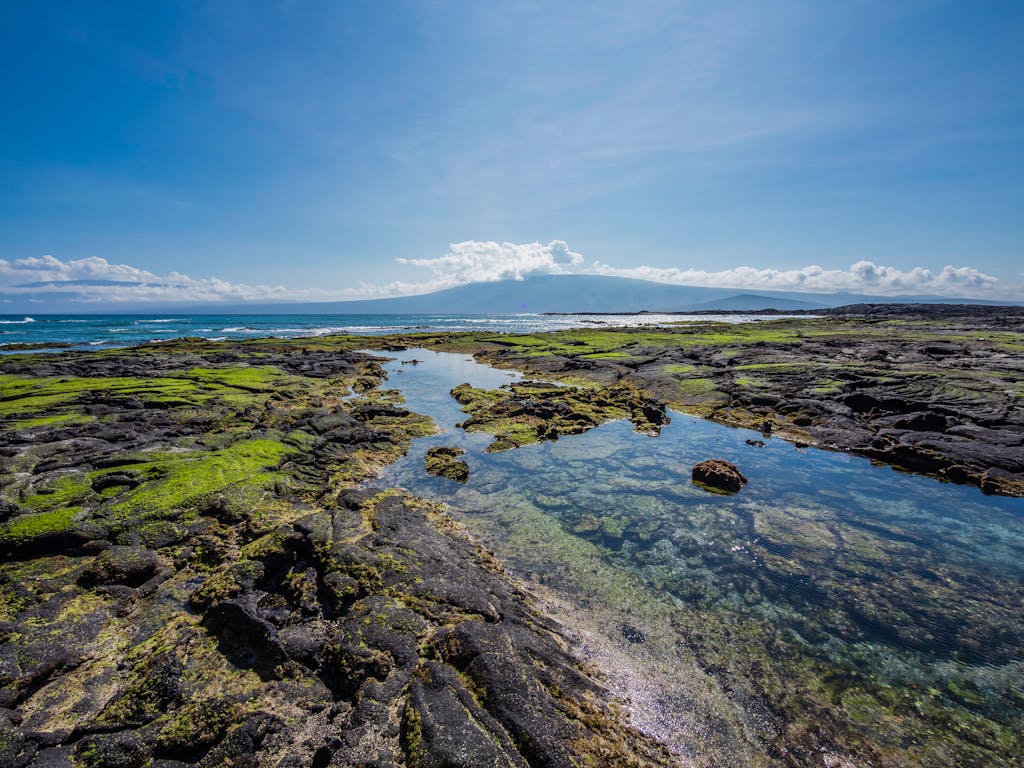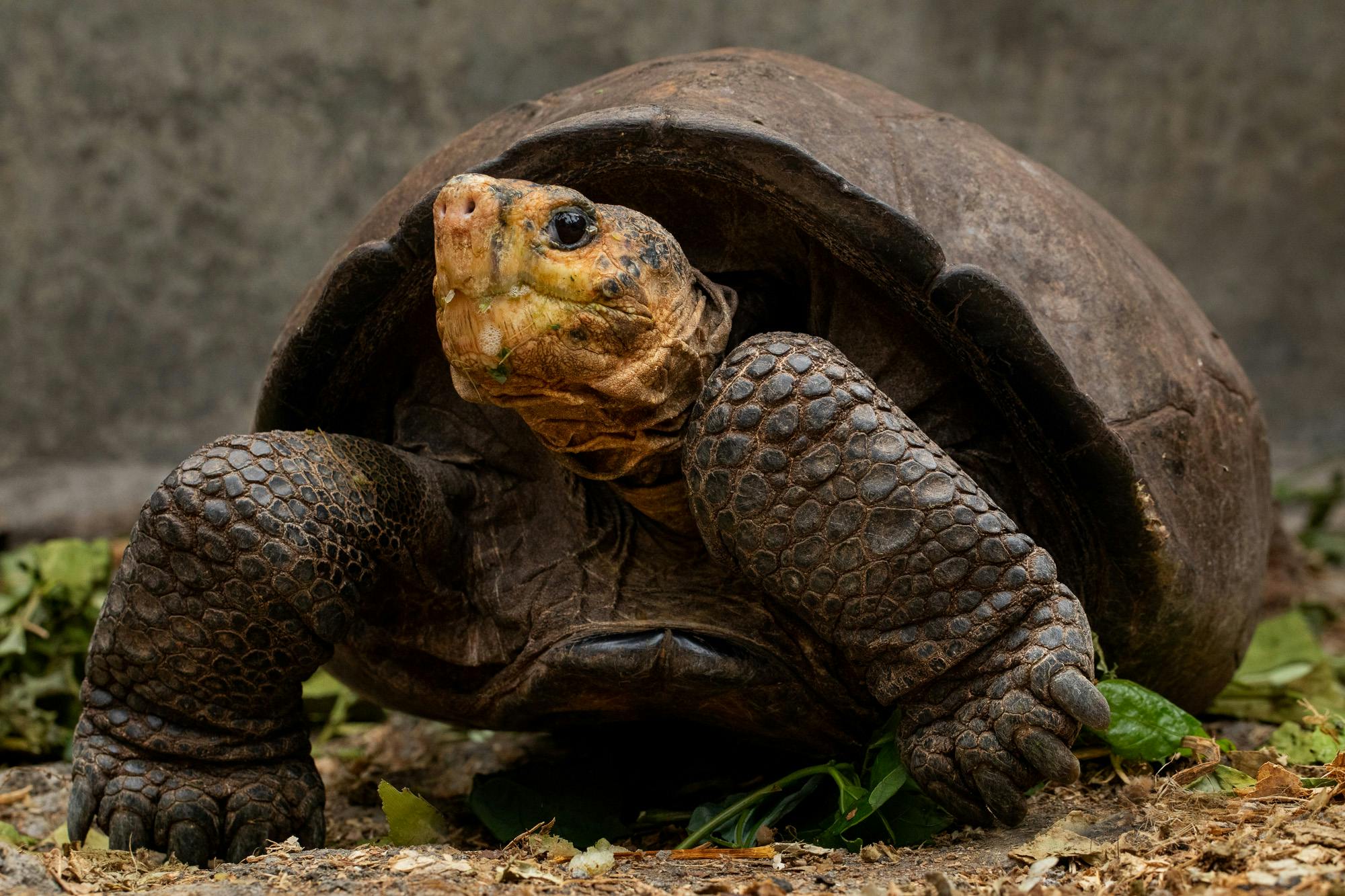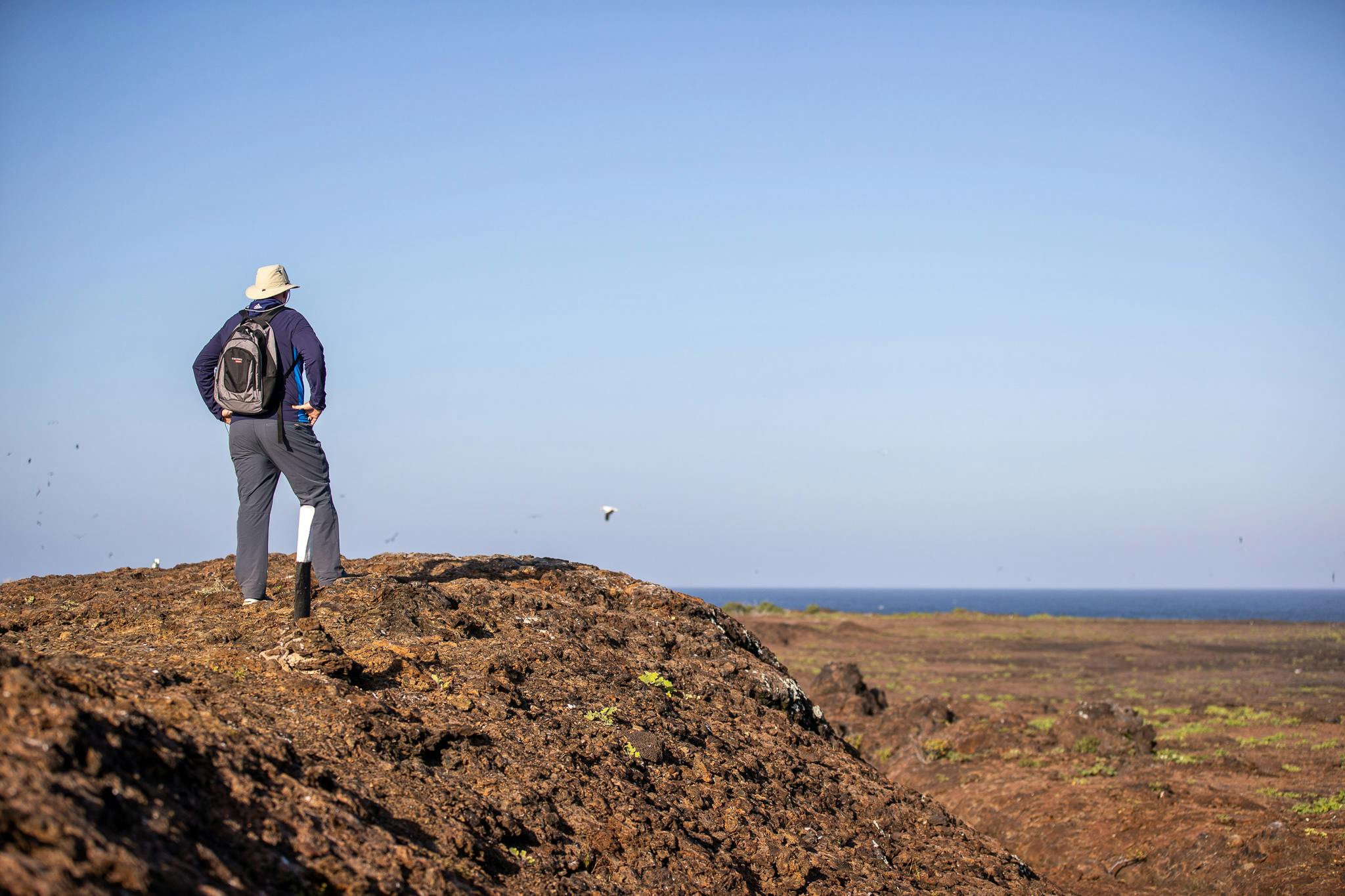Giant Tortoise Considered Extinct Confirmed in Galápagos Islands; Silversea Guide Plays Part
On a swelteringly hot and humid day in 2019, in rocky and inhospitable terrain, history was made in Ecuador’s Galápagos Islands. One of the oldest creatures on Earth was found on the youngest island in the chain.
The only living member of a species of giant tortoise, previously considered extinct for 112 years, was found on remote Fernandina Island. And Ecuadorian naturalist and Silversea guide and lecturer, Jefferson “Jeffo” Marquez, was there when it happened. He was part of an expedition to find a living specimen of the long-lost Fernandina Giant Tortoise, organized by the Galápagos National Park Directorate, Galápagos Conservancy and Animal Planet’s “Extinct or Alive” show. (You can watch the moment of discovery here.)
It took two years for the discovery to be confirmed. In May of this year, scientists from Yale University identified the animal as the Chelonoidis phantasticus species after completing genetic studies and a DNA comparison with the only other analyzed specimen, a now-deceased male found in 1906.
“It was believed extinct more than 100 years ago! We have reconfirmed its existence,” Ecuador’s Environment Minister Gustavo Manrique tweeted excitedly.
What’s It Like to Be Part of a Team That Makes Such a Discovery?
Jeffo Marquez, who was born in the Galápagos, looks back to the moment of discovery with pride. “It was in a very complicated place to access,” he says. “It was in a very small patch of dry forest vegetation completely surrounded by difficult lava flows,” which is not surprising since Fernandina is the Galápagos’ most active volcano. It’s also the third largest island in the archipelago, which made the search even more challenging.

“We used a drone to identify the best patches in the lava, so we weren’t searching with blind eyes,” says Marquez. Plus, “the park rangers we had were very experienced and very good.” After following footprints and finding evidence of the animal’s distinctive excrement (tortoises don’t chew their food, they swallow it whole), “we finally saw one of the back legs sticking out of a very dense scotia bush,” he says. After carefully extracting it, several team members spontaneously kissed the animal’s hard shell in triumph.
Marquez still remembers the thrill. “It’s hard to describe our emotions. Most of us believed there were no more of those tortoises left,” he recalls. “When we found it, the excitement was huge for all of us. I was lucky to be in the right place at the right time.”
Let’s Meet “Fern”
“Fern,” as the elderly female is affectionately called, is just one of many varieties of tortoises that inhabit the isolated Galápagos Islands, together with countless species of flora and fauna in danger of extinction. In fact, galápago means tortoise in Spanish. Located 620 miles west of mainland Ecuador, the island chain is a fragile ecosystem that harbors numerous unique animal species, completely untouched by introduced or invasive species. Because of that, they famously served as the basis for British scientist Charles Darwin’s theory of evolution in the 19th century.
The current population of giant tortoises from various species is estimated at only 10-15 percent of its historical number of about 200,000-300,000 individuals. Their population was decimated in the 19th century by “whalers and buccaneers,” Galápagos Conservatory said in a statement. “But there is hope. Park rangers have found signs (tracks and scat) of at least two other tortoises on Fernandina Volcano during the searches that resulted in the discovery of the lone female.”
Now, the search is on to find a mate and save the species from extinction. “It’s a huge island and hasn’t been searched completely by anyone,” says Marquez. “So they will need more personnel and more expeditions. And it’s also a matter of luck. Even though the tortoises don’t move fast, they can hide easily in difficult and dense vegetation. And you might not be there at the right moment.”
“One of the greatest mysteries in Galapagos has been the Fernandina Island Giant Tortoise. Rediscovering this lost species may have occurred just in the nick of time to save it,” said Dr. James Gibbs, Vice President of Science and Conservation for the Galapagos Conservancy and tortoise expert at the State University of New York on the Conservancy website. “We now urgently need to complete the search of the island to find other tortoises.”
In fact, follow-up searches explain the two-year delay in the confirmation of this landmark finding, explains Marquez. The Galápagos National Park had hoped to be able to send Yale evidence of additional specimens for analysis. But when no others were found after several more expeditions, the university proceeded with just Fern.
What’s Next? Finding Fern a Mate!
If a male is found, he will be united with Fern at the Galápagos National Park’s Giant Tortoise Breeding Center in Santa Cruz. Scientists would then oversee breeding efforts, rear any young safely in captivity, and eventually return them to their native habitat on Fernandina.
“The goal is to find a mate on Fernandina so the genes are pure,” says Marquez. “But it’s been proved that Galápagos Island tortoises can be mixed and their descendants are still viable. So at least we can have some of the gene percentage in future babies.”
Is Marquez optimistic about another find? “Personally, I think there are more Fernandina Island tortoises, but I don’t think the population is large if there are still some left,” he speculates.
But one thing is certain. Being part of the greatest Galápagos discovery in more than a century “was one of the most thrilling experiences I’ve had as a naturalist in Galápagos,” he says. “It was being part of something historical.”



















